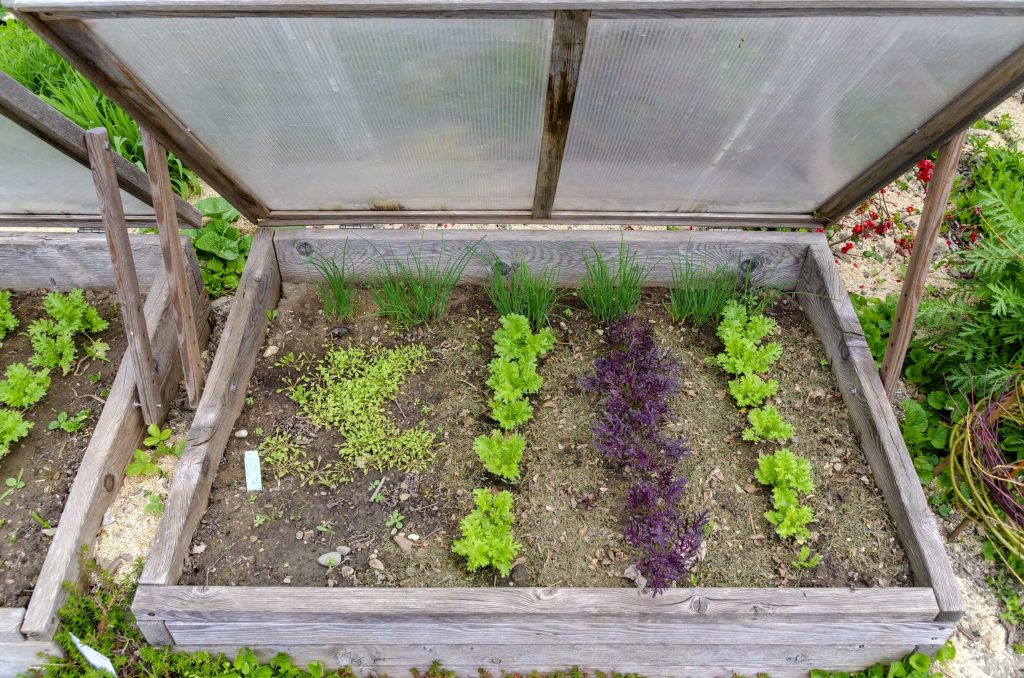Ensuring that plants will survive challenging conditions is a skill that requires a little bit of creativity. Cold weather, intense summer heat, pests, and even animals can ruin plants and contribute to their demise.
You do not necessarily have to exercise your green thumb to make plants grow and survive; you just need to have an enclosed structure that could protect your plants. Hence, one of the best solutions to ensure that plants survive and stay protected from environmental elements is the use of cold frames.
Cold frames are enclosed structures with a transparent roof to house and protect your plants. The cold frame’s transparent roof helps collect and absorb the sun’s rays, with the sides helping to trap the heat. Seedlings, delicate plants, and crops all benefit from the protection because cold frames serve as a mini greenhouse.
Historically speaking, these frames were originally built to supplement greenhouses. Their name itself was derived from the distinction between the ‘cold’ frame and the warm greenhouse. Their original purpose was to contain the seeds grown inside the greenhouse. This allowed the coating of the seed to soften and germinate better when placed in cold frames.
Cold frames create microclimates that are beneficial to the plant that is contained within it. This assists the plant in growing and helps them survive. With that being said, here are the benefits of having cold frames for your backyard plants:
Depending on the materials and the size of the cold frame, cold frames often cost $30 to $100 dollars. Usually, this range covers wooden or plastic cold frames, which are the ideal materials for building such structural support for the plants. The lid is normally made of plastic.
The cost for more high-end materials can range from around $100 to $600, still depending on the material and size of the cold frame. Check out the cold frames available at swgreenhouses.co.uk to get a better idea of the variety available.
Even low-cost cold frames can prove to be highly efficient. In contrast to the traditional greenhouses, which are high-maintenance due to the need for tedious tending, cold frames require less effort and less money. Greenhouses need to be checked for leaks and pests while cold frames do not. In addition, once plants are inside a greenhouse, they require intensive care, such as pruning, watering, as well as cleaning.
Additionally, cold frames offer many more benefits than traditional gardening done in the greenhouse. Building a greenhouse would normally cost around $500, which is barely affordable for the vast majority of people. As cold frames do not require as much money, space, and effort, they make gardening less tiresome and difficult.
One of the benefits of a cold frame is that it requires only a minimum amount of space, with no need for any ventilation or irrigation system. Cold frames only stand a few feet tall, which would save you a hefty amount of space. In addition, cold frames utilize the natural heat of the sun, while protecting the plants at the same time.
Furthermore, cold frames do not require any support such as the side of the house. As mentioned, cold frames usually stand around 2 to 4 feet tall and are considered low maintenance. Any person using a cold frame to grow plants will not need to shovel the ground, check for leaks, or maintain the cleanliness. Also, right after using the cold frame, you can store it for future use, so the damages to the cold frames will be minimal.
Aside from their low-maintenance and high efficiency, cold frames are also used to plant seasonal crops and plants. For instance, one can plant a crop that could grow only in the spring and harvest it in the fall. Horticulturists also take advantage of the outdoor growing season to acclimatize their plants and crops sooner, which allows them to grow faster during the winter. Since cold frames trap the heat inside, the soil becomes warmer by 5 to 10 degrees which is an ambient temperature for most of the plants grown outdoors.
Cold frames are most applicable when a region is experiencing cold winters. Cold frames keep the heat within the system so crops can be harvested during winter, a season where harvesting crops is usually tedious and cumbersome. This allows the farmers and gardeners to extend the growing season of their crops, especially if they wither at the first sign of fall or winter. Lastly, extending the growing season using cold frames offers the advantage of harvesting fresh crops all winter long.

Cold frames also offer the benefit of having food for the whole year. Plants normally tend to acclimatize or adjust to the weather system. But with the help of cold frames, plants could grow and be harvested regardless of the prevailing weather.
Some of the crops that can be planted inside cold frames include broccoli, herbs and spices, carrots, spinach, lettuce, tomatoes, beets, radishes, and a host of other healthy vegetables.
Aside from planting almost anything inside cold frames, gardeners often use them to harden seedlings and prepare them for planting.
Cold frames offer the artificial weather system necessary for seeds to grow, and for normal gardening to begin. This will help farmers and gardeners to easily prep the seeds for efficient and high-yielding crops that can be sold in commercial establishments, or be used as a decoration for one’s home.
Cold frames offer many benefits in gardening, planting, and harvesting crops. Ranging from protecting the plant from harmful pests and inclement weather, to their low maintenance and high-efficiency capability, cold frames really make gardening a more enjoyable experience. Cold frames also ensure that gardeners can maximize the efficiency of the garden, and get enough provisions for themselves. With a growing population and limited space for everyone, cold frames offer a clear advantage as no one has to bother with acquiring that ‘green thumb’ anymore.